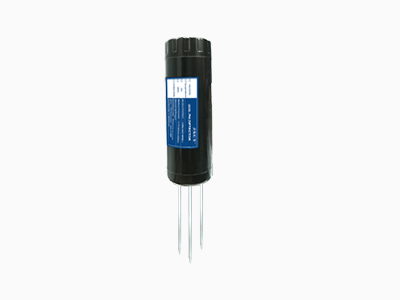Smart farming, also known as precision agriculture, has emerged as a transformative approach that leverages technology to optimize agricultural practices. Among various technological advancements, soil sensor innovations play a crucial role in unlocking the potential of smart farming. These sensors provide real-time data on soil conditions, enabling farmers to make informed decisions regarding irrigation, fertilization, and other aspects of crop management. This article explores the significance of soil sensor innovations, their applications in smart farming, and the benefits they bring to agricultural productivity, sustainability, and resource optimization.

The Role of Soil Sensors in Smart Farming:
Soil sensors are devices designed to measure and monitor various parameters of the soil environment. They utilize advanced technologies such as electrical resistance, capacitive sensing, and spectroscopy to collect data on key soil characteristics, including moisture levels, temperature, nutrient content, pH, and salinity. This real-time information enables farmers to optimize their farming practices and achieve precise resource management, resulting in improved crop yields, reduced environmental impact, and increased profitability.
Applications of Soil Sensors in Smart Farming:
2.1. Precision Irrigation Management:
One of the primary applications of soil sensors is in precision irrigation management. By continuously monitoring soil moisture levels, these sensors provide accurate data on water availability in the root zone. Farmers can then adjust irrigation schedules based on actual plant needs, avoiding overwatering or underwatering. This precise irrigation management not only conserves water but also optimizes plant growth, improves water-use efficiency, and reduces energy costs associated with irrigation.
2.2. Nutrient Management:
Soil sensors play a vital role in efficient nutrient management. They can measure the concentration of essential nutrients such as nitrogen, phosphorus, and potassium in the soil. By monitoring these nutrient levels, farmers can apply fertilizers precisely, avoiding over-application and minimizing nutrient runoff. This targeted approach leads to improved nutrient-use efficiency, reduced environmental pollution, and cost savings for farmers.
2.3. Soil Health Monitoring:
Soil sensors provide valuable insights into soil health parameters, including organic matter content, pH levels, and compaction. Monitoring these indicators allows farmers to detect potential soil issues promptly and take appropriate corrective actions. By maintaining optimal soil health, farmers can promote beneficial microbial activity, nutrient cycling, and root development, resulting in healthier plants and sustainable agricultural practices.
2.4. Crop Growth Monitoring and Management:
Soil sensors aid in monitoring crop growth by providing real-time data on soil conditions. A combination of soil sensor data with weather information, satellite imagery, and crop models enables farmers to optimize planting schedules, adjust fertilizer application rates, and identify stress conditions that may require intervention. This data-driven approach helps maximize crop yields, improve product quality, and reduce input costs.

Benefits of Soil Sensor Innovations:
3.1. Enhanced Resource Efficiency:
By providing precise and real-time data, soil sensors enable farmers to optimize resource usage, reducing wastage and improving resource efficiency. Water, fertilizers, and energy can be targeted and applied only when needed, minimizing losses and conserving valuable resources. This not only benefits the environment but also improves farm profitability by reducing input costs.
3.2. Improved Crop Yields and Quality:
Accurate monitoring of soil conditions using soil sensors allows for timely interventions to address any deficiencies or imbalances in the soil environment. By ensuring that crops receive the right amount of water, nutrients, and other necessary inputs, farmers can enhance plant growth, increase crop yields, and improve product quality. This contributes to higher market value for their produce and strengthens their competitive position in the market.
3.3. Environmental Sustainability:
Soil sensor innovations facilitate sustainable farming practices by promoting efficient resource management and reducing environmental impacts. By optimizing irrigation and nutrient application, farmers can minimize water pollution and nutrient runoff, protecting water bodies and preserving ecosystem health. Additionally, the precise management enabled by soil sensors helps reduce greenhouse gas emissions associated with excessive fertilizer application and unnecessary irrigation.
3.4. Data-Driven Decision Making:
Soil sensor innovations provide high-resolution data that can be used to make informed decisions regarding crop management. By combining soil sensor data with other relevant information such as weather forecasts and histor
